Best Fender amps 2025: famous tube combos to digital headphone amps
From beginner practice amps to touring-grade tube combos, these are the best amplifiers from the industry's most famous brand
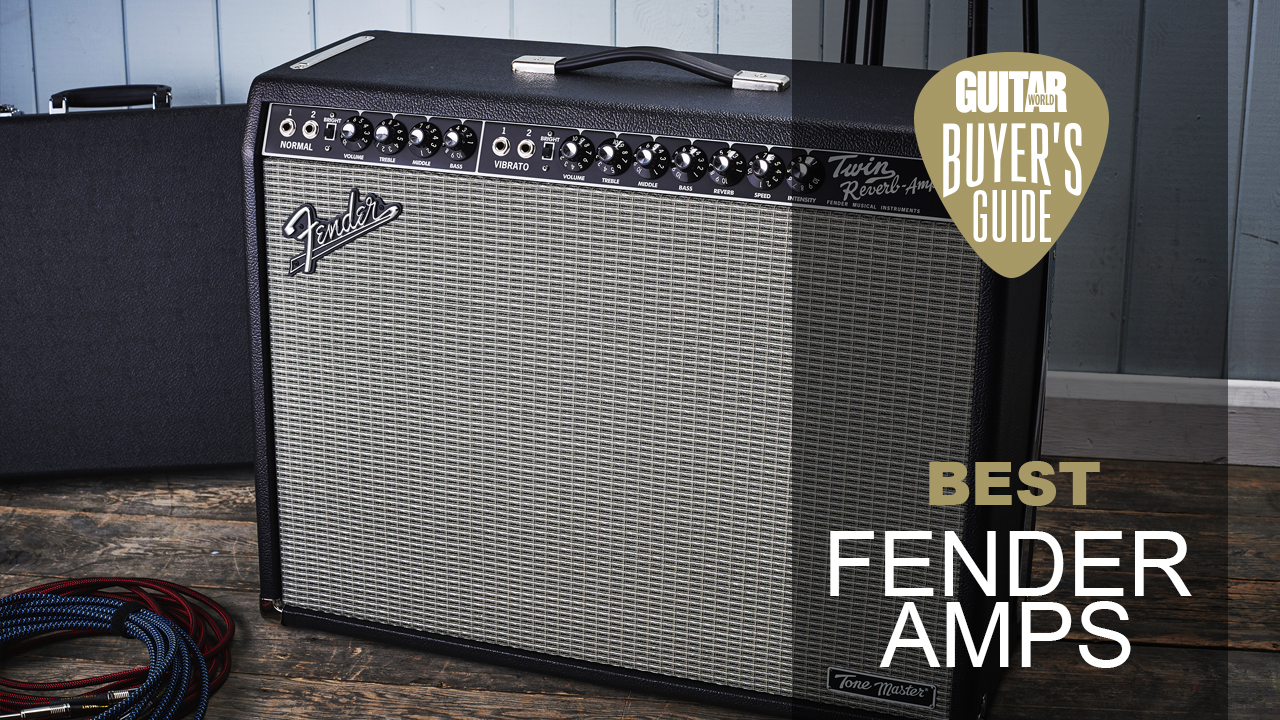
When we think of guitar amplifiers and their tonal DNA, three names always spring to mind – Vox, Marshall, and Fender. Many other great brands exist, but the big three are fundamental, as though genres unto themselves. Hear the name Vox and we think of trebly chime, The Beatles, and Brian May’s harmonically rich overdrive. Marshall? Well, that’s the rock amplifier; the wall of noise behind Hendrix, Townshend, and Billie Joe Armstrong. As for the best Fender amps, they’re synonymous with that all-American sound.
It's not just that all-American sound that Fender amps can do though. More recently, Fender has proved that it can bring the gain just as well as the rest of them, all while retaining that signature Fender sound. There’s also been a slew of signature amplifiers released, with artists like Jack White, George Benson, and Chris Stapleton receiving their own models.
As a result, whichever genre of music you’re looking to play, you’ll have no shortage of options. Here, we round up the best Fender amps, from vintage-inspired tube amps to cutting-edge modeling amps and digital recreations of the classics. Whether you need a versatile practice amp that covers multiple genres or a powerhouse tube amp to blow the crowd away at your local venue, Fender has you covered.
We've also included some expert advice in our FAQs section, so if you'd like to read more about the best Fender amps and what to know when buying one, then click the link. If you'd rather just get to the products, keep scrolling.
Top picks
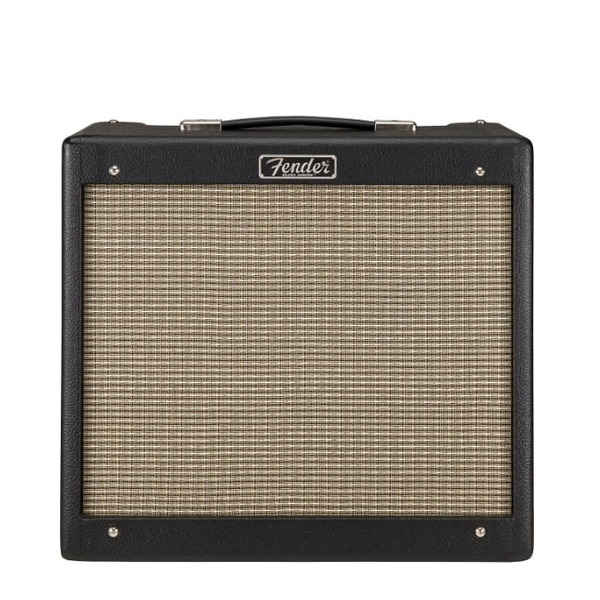
Probably the most popular Fender amp around, the Blues Junior is well known for being the go-to gigging amp for guitarists the world over. Packing great tone in a relatively low cost package, it's our top choice for the best Fender amp.
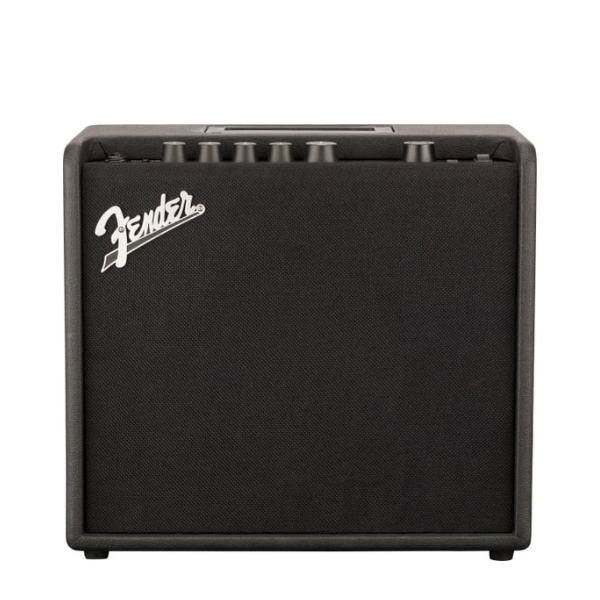
If you want Fender amp tones but don't have the budget for an expensive tube combo, the Fender Mustang LT25 features all the famous Fender amp tones via modeling tech. Low cost and portable, it's perfect for beginner guitar players.
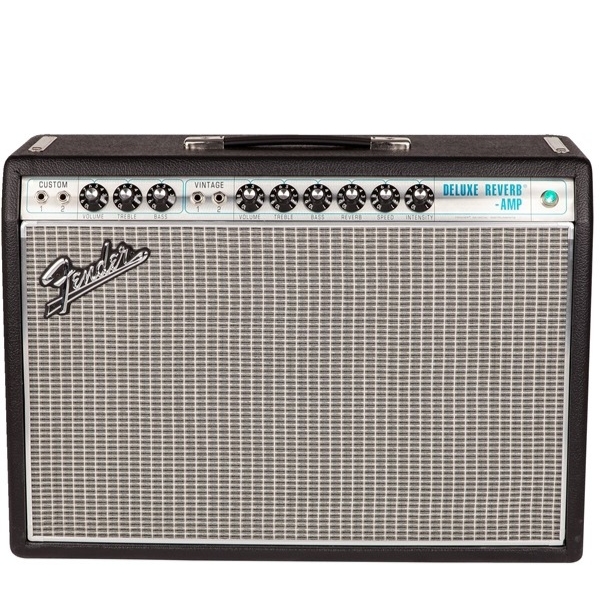
You'll often see this amp on the backline of touring guitar bands because it's such a great pedal platform. It's ultra versatile with a beautiful dynamic response, and the onboard tremolo and reverb deliver some sumptuous sounds.
Best overall
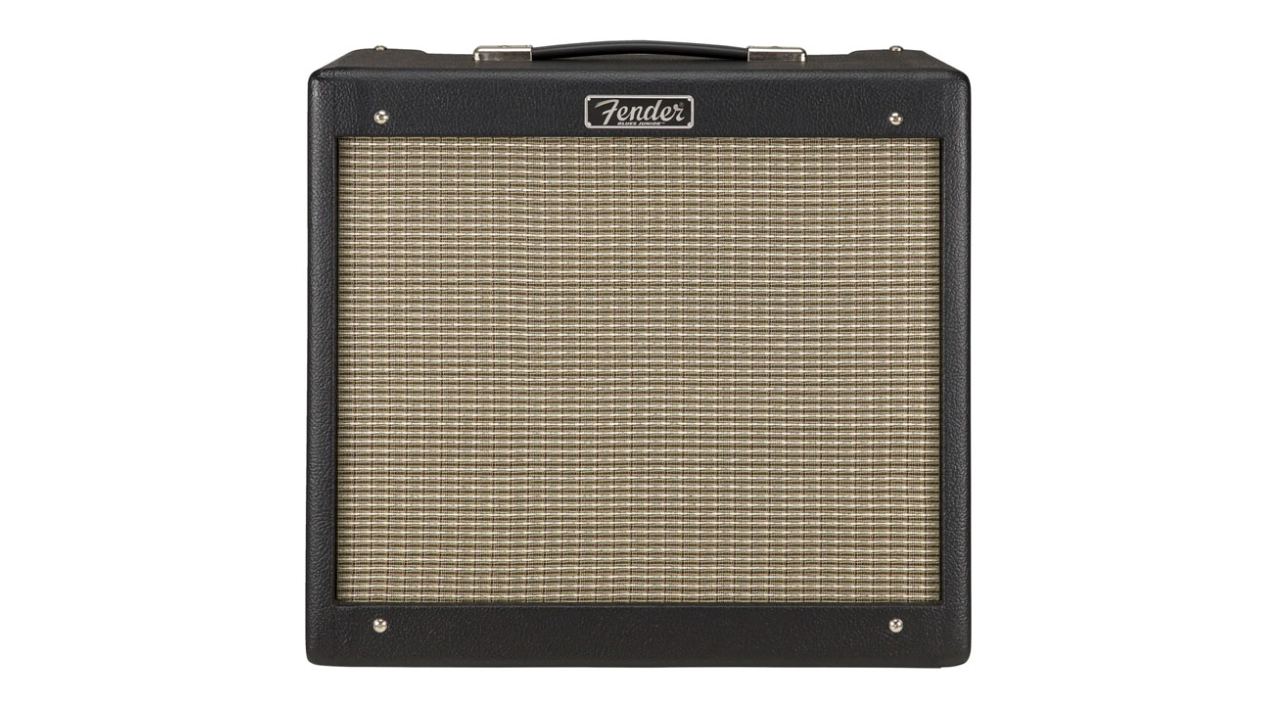
1. Fender Blues Junior IV
Our expert review:
Specifications
Reasons to buy
Reasons to avoid
Sensibly priced, adequately powered and offering truly exemplary, tube-driven Fender tones, the Blues Junior is a perennial best-seller for good reason. Launched in 1995, it boasts a simple, single-channel set-up, with chicken-head controls for volume, treble, middle, bass, master volume and reverb, plus a very neat Fat switch that does exactly what it says, adding a little tubbiness and meat on the bones.
The single 12” Celestion A-Type speaker is housed in a particle board cabinet, and does a good job of rendering that clean Fender spank and – when you turn it up – hot, bright overdrive. The Blues Junior is not a high-gain amp – that’s not a quality Fender tube amps possess – but it does pack some heat that can be accentuated nicely with your dirt box of choice. Indeed, the Blues Junior makes a fine pedal platform – just so long as you don’t need too much headroom.
As the name suggests, it specializes in blues tones. Whether partnered with a Strat and a Tube Screamer, or a Les Paul and a boost, there are plenty of sweet spots to be had. Drive it hard and it’ll respond with a raunchy drive that’ll clean up quite nicely with your guitar’s volume control. But it’s not just a blues amplifier. Classic rock, jazz and rock ’n’ roll are all comfortably within its wheelhouse. The reverb is pretty sweet, too.
Read the full Fender Blues Junior IV review
Best budget
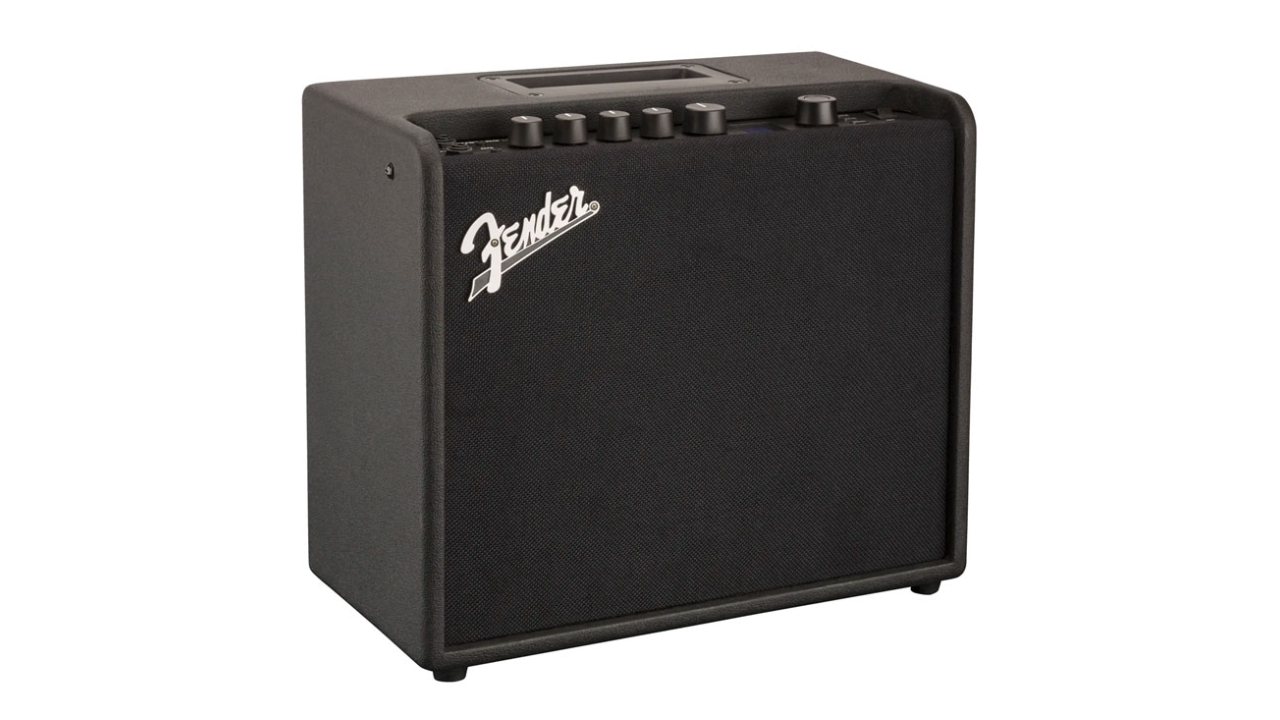
Specifications
Reasons to buy
Reasons to avoid
The Mustang LT25 is a home run for Fender. There’s nothing not to like here. Not only does this digital modeling amp pack a ton of interesting tones inside its compact, portable frame, it’s also easy to use and affordable, making it an ideal first amp for beginners.
In truth, players of all abilities will have a blast getting to know its 20 amp models. You can access stereotypical Fender cleans – those skinny mids with the heavy bottom and pronounced treble – or dial in some fire-breathing high-gain tone that’ll help you graduate from Modern Metal Guitar 101.
Should you find yourself coming up with a great musical idea, you can hook the LT25 up to your computer via USB for recording. There’s also an onboard tuner, along with a headphones output for when you fancy a late-night practice session.
Read the full Fender Mustang LT25 review
Best for gigging
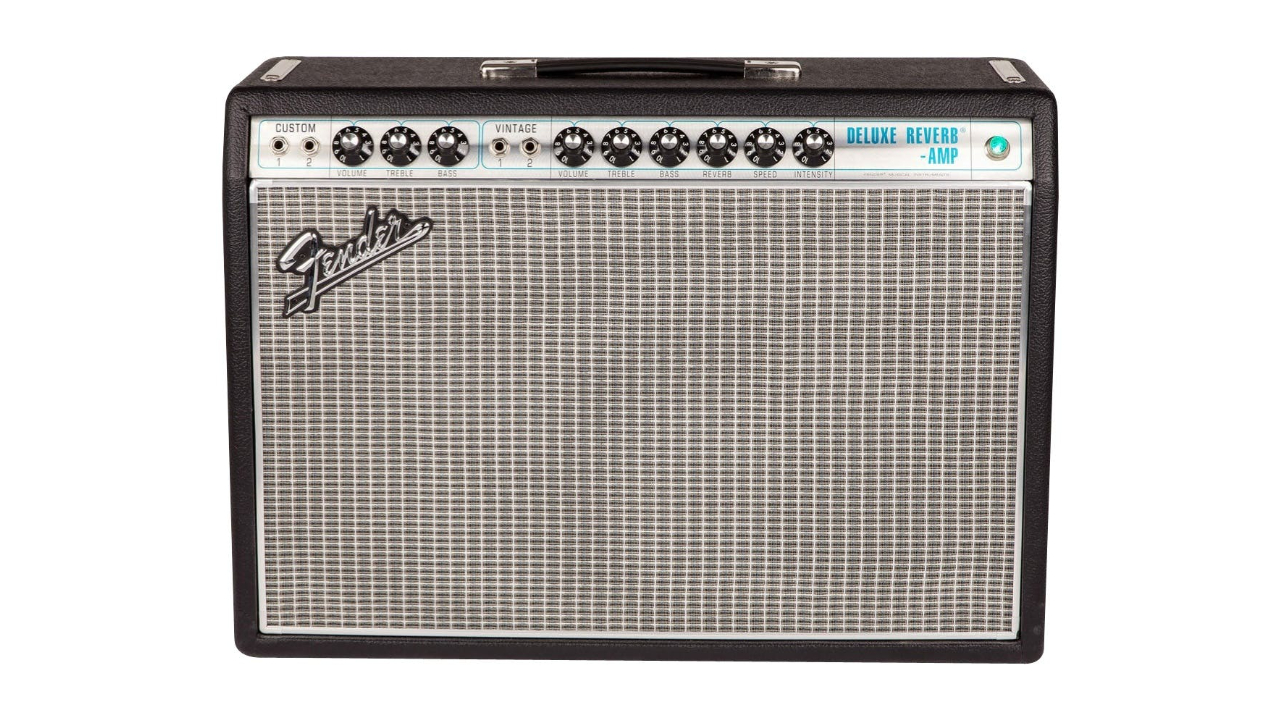
3. Fender ’68 Custom Deluxe Reverb
Our expert review:
Specifications
Reasons to buy
Reasons to avoid
If you asked a thousand guitar players what their favorite Fender tube combo was, the Deluxe Reverb would surely be among the most popular answers. It might even top the list. Adequately powered, with sumptuous cleans and a fine, sparkling growl when dimed, it’s an amp for most seasons, equally at home with Nashville twang as it is gritty ’70s US rock.
This Silverface reissue is the business. It references Fender’s CBS-era amplifiers with its silver and turquoise control panel, matching grille cloth and aluminum drip edge trim, but sets about updating the response with reduced negative feedback to bring on that raunchy overdrive a little earlier. Under the hood, there are hand-wired tube sockets and custom-made Schumacher transformers.
The two channels – Custom and Vintage – each have dual instrument inputs. The Custom channel is a little more stripped-down, with just volume, bass and treble controls, but if you're in a position where you can get some serious volume going, it delivers a lovely, chewy, tweed-esque overdrive that’ll get rock players excited. Meanwhile, tremolo and spring reverb will provide a truly musical sense of depth and movement to your sound.
Quintessentially American, quintessentially Fender, the Deluxe Reverb remains as relevant and compelling as ever.
Best tube
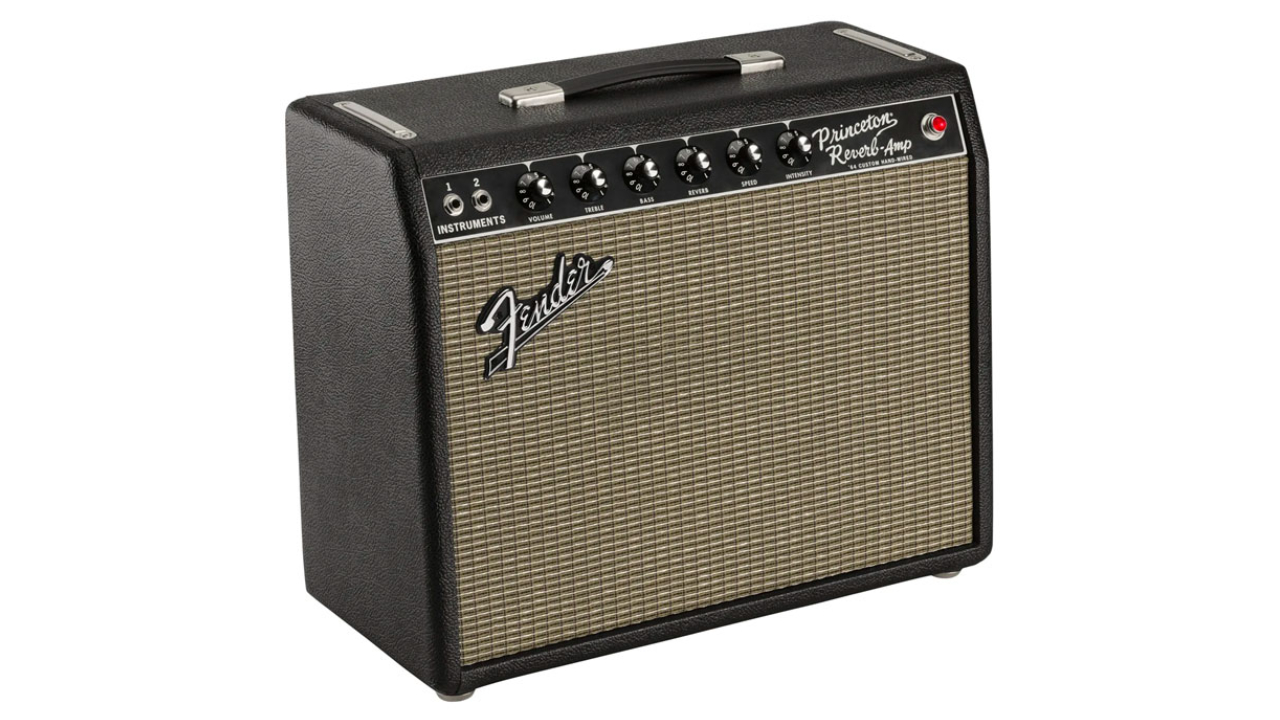
4. Fender ’64 Custom Princeton Reverb
Our expert review:
Specifications
Reasons to buy
Reasons to avoid
If you can get on board with the idea that the Princeton Reverb is quite possibly the best tube amp combo for studio work – and most gigs, so long as Animal isn’t sitting at the drum kit – then let’s go the whole hog and agree that this hand-wired custom reissue is the best Princeton on the market today. It ain’t cheap, but then neither are vintage alternatives, and this comes with zero road miles on the clock.
The format is familiar. It’s a single-channel affair with two inputs, plus controls for volume, bass, treble and reverb (along with speed and intensity dials to set the tremolo). It sounds like the acme of Fender tone – bright, sparkly cleans with that elastic musicality to them, and a drive tone that’s raunchy and moreish – but needs an external drive box if you want more saturated sounds.
As for the build, it’s reassuringly excellent. It might be an old design but the simplicity remains a breath of fresh air, and it works nicely with pedals, too. Savored neat, however, there’s a purity to its tone – place a premium mic in front of it, in an acoustically sympathetic room, and you’ll have a recorded guitar tone for the ages.
Read the full Fender ’64 Custom Princeton Reverb review
Best modeling
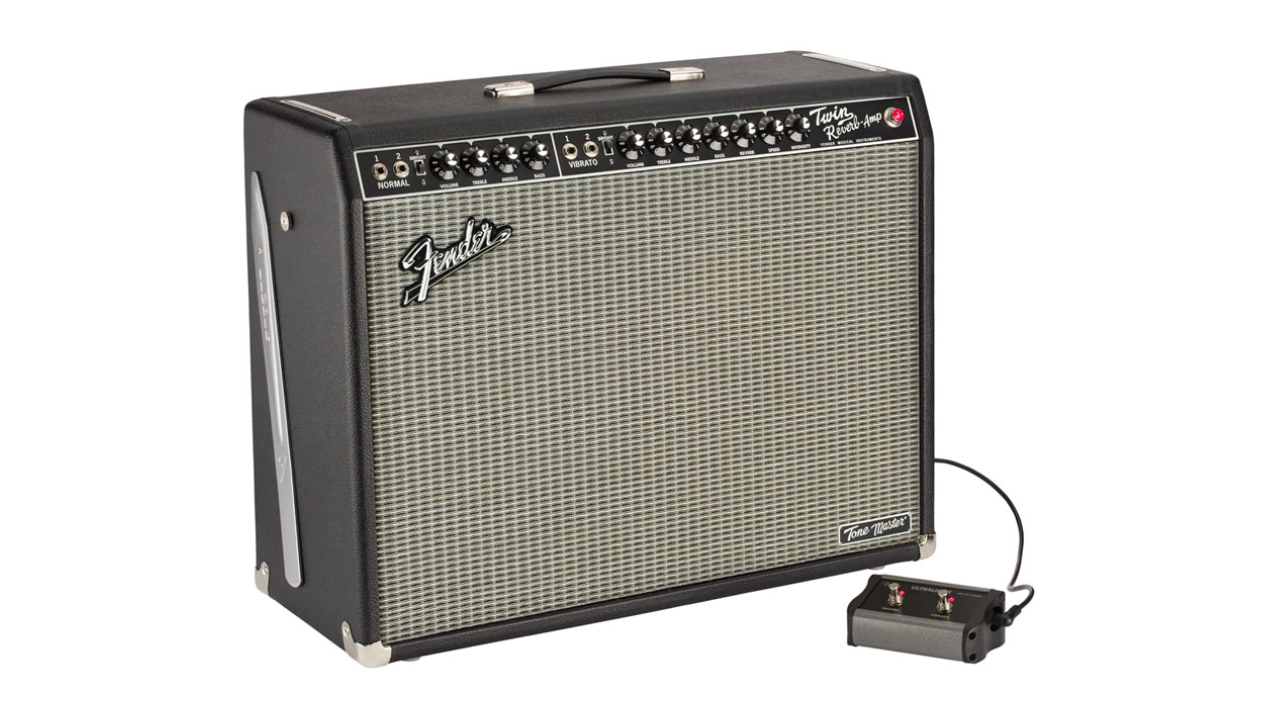
5. Fender Tone Master Twin Reverb
Our expert review:
Specifications
Reasons to buy
Reasons to avoid
There’s a lot to love about the tube-driven Fender Twin Reverb. Over the years, it has been to clean electric guitar tones what Roger Federer has been to tennis. Its ample power and headroom have made it a popular choice among touring musicians who want their Strat to stay glassy even when it’s loud enough to be heard above the drummer’s cymbals. Its reverb is phenomenal, too, and as a pedal platform, it’s tough to beat.
But, let’s face it, the Twin Reverb can be really loud, and it’s really heavy. What if there were an alternative, with power scaling and a lightweight build that didn’t make the soul leave the body when standing at the bottom of your local venue’s staircase? Thanks to the digital modeling technology of the Tone Master series, there is. For players of a certain vintage, lifting a Tone Master Twin Reverb will make them feel like Lou Ferrigno. It’s incredible.
And when they plug into one, things will get really spooky. The Tone Master Twin Reverb is uncannily like the tube-driven original. There’s still more headroom than the inside of an aircraft carrier, and yet, thanks to a five-way power attenuator, you can tailor the Tone Master’s response to your playing environment. There’s also a balanced XLR output and a pair of impressive cabinet simulations for recording and going direct.
Read the full Fender Tone Master Twin Reverb review
Best practice

Specifications
Reasons to buy
Reasons to avoid
Upon its release, the Mustang Micro was the ultimate practice solution for those needing to keep the noise down. It borrows top-quality digital sounds from the Mustang GTX series and packs them into a device about the size of an MP3 player, featuring a 270-degree rotating input plug that fits most instruments. With just a set of quality headphones, you can take it anywhere.
Now in its second iteration, the Mustang Micro Plus has introduced several useful upgrades. It boasts 25 amp models and 25 effects, an increase from the original 12, providing even more sound options. The integrated screen makes selecting from the 100 available presets much easier.
Bluetooth audio streaming remains available, allowing for easy play-along with your favorite tracks, and the USB output lets you send your signal directly to your DAW for recording. With over four hours of continuous playtime, charging is infrequent.
The Fender Tone app now offers deeper tone editing, allowing you to tweak EQ settings, effects parameters and gain. While this added functionality requires another device, it opens up a world of possibilities for those willing to connect.
Read our full Fender Mustang Micro Plus review
More options...
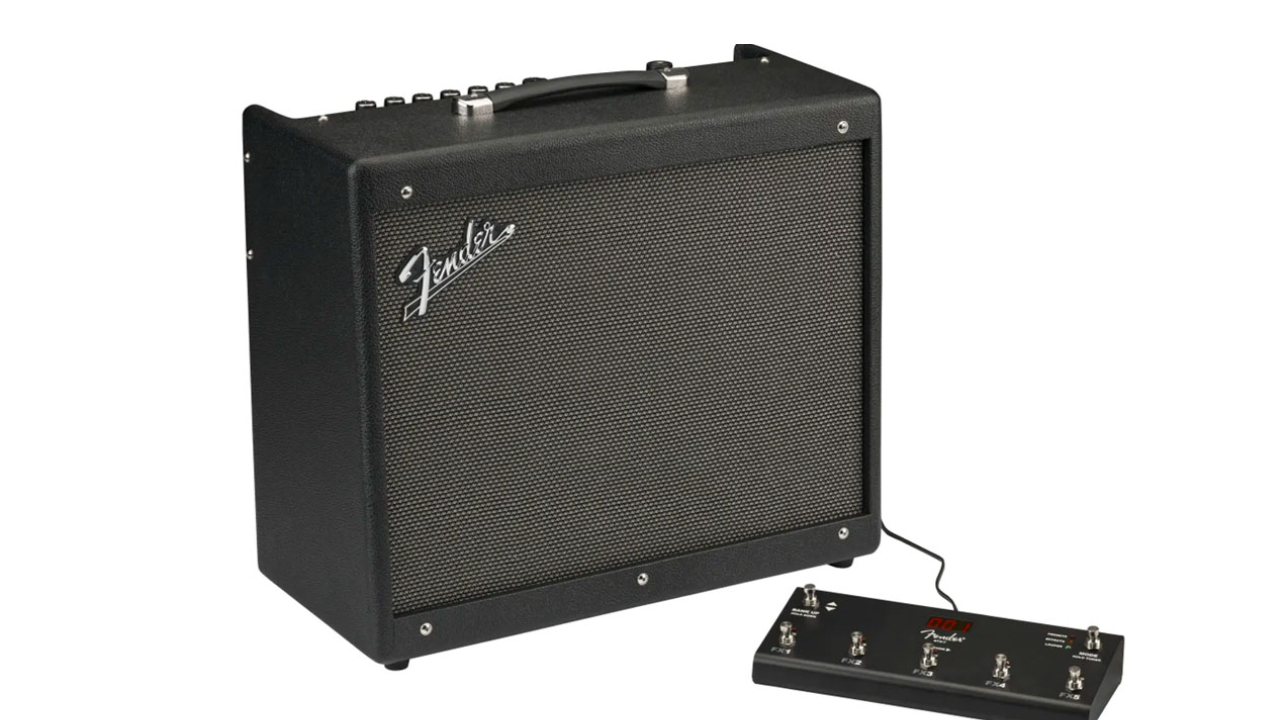
Specifications
Reasons to buy
Reasons to avoid
The Fender Mustang GTX100 might well be one of the best amplifiers you can get for the home. It’s compact and offers a ridiculous wealth of tones to play with at any volume. And yet, while it’s perfect for the living room, it also has enough power to handle gigs. Indeed, if you're playing small gigs with a different set each night, the GTX100 offers all the options you could need. Its seven-button footswitch is a convenient and portable alternative to expensive rigs and pedalboards.
You can program up to 200 presets, bring the 60-second looper into play via the footswitch and, thanks to the USB and XLR outputs, go straight to a sound desk or to your DAW for recording. Deep editing is made easy via the Fender Tone 3.0 app, but while the digital bells and whistles make for a fully featured modern amplifier, they don’t get in the way of what feels like a reassuringly normal amp experience – i.e. this digital powerhouse is perfectly attuned to an analog temperament.
The quality of the effects is impressive, and so too is the ability to take full control of your signal path when putting together sounds. Indeed, the intuitive design is a huge selling point here, with a clean control panel putting those sounds within easy reach. There’s an auxiliary input for playing along to external audio, a stereo effects loop, an onboard tuner, an electric toothbrush… No, wait, no toothbrush. But still, a sweet deal all in, and we’ve seen many a pro using these at home.
Read the full Fender Mustang GTX100 review

8. Fender Acoustic 100
Our expert review:
Specifications
Reasons to buy
Reasons to avoid
The Fender Acoustic 100 is everything a singer-songwriter needs to make open-mic night a resounding success. Impeccably built, it has two channels – one for your instrument, the other for a mic – and, weighing in at just 17.6lbs/8kg, it’s nice and portable too.
Like all good acoustic guitar amps, the Acoustic 100 places the emphasis on the instrument rather than the amplifier – after all, plugged or unplugged, you’ll want the option of a good, transparent acoustic tone. Thereafter, of course, you can season to taste. There are plenty of onboard effects, with reverbs to add some depth and space, and tape echo, delay and chorus for the more tonally adventurous acoustic player.
A stereo XLR output will let you send the signal directly to the house’s PA system, and you’ll also be able to stream backing tracks via Bluetooth. Although we think the Acoustic 100 looks magnificent, the coffee shop aesthetic may not be everyone’s cup of tea.
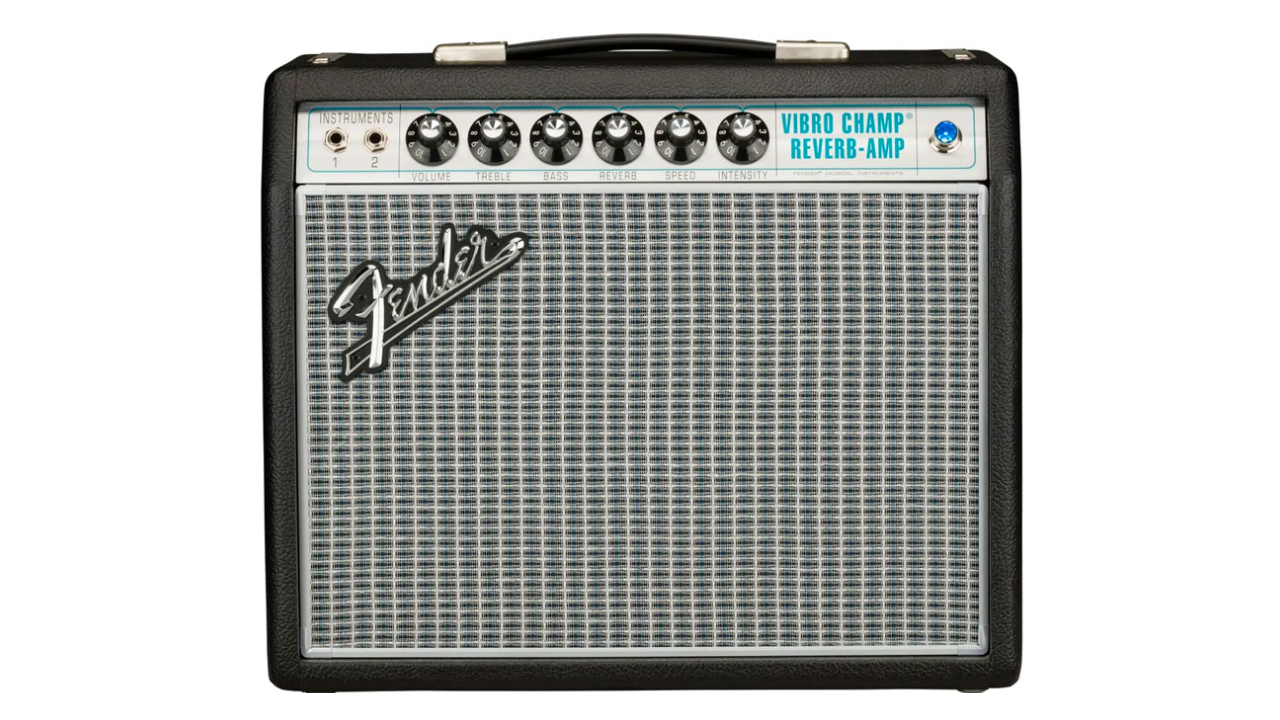
9. Fender ’68 Custom Vibro Champ Reverb
Our expert review:
Specifications
Reasons to buy
Reasons to avoid
Originally launched concurrently with the ’68 Custom Pro Reverb, this little 5W tube combo is a compelling proposition for studio players, downsizing the vintage Silverface mojo of its larger siblings and making that juicy overdrive available at more manageable volumes. Indeed, as with the others in the series, Fender has revised the spec to make it a little more practical for today’s player. The 8” speaker of the original late-’60s Champ has been upsized to a 10” Celestion, giving its voice a little more width and range, along with a noticeably more serious bottom end.
Of course, headroom is at a premium here, and just as you get going with those classic Fender cleans, you’ll notice a little hair on the tone. But that’s when the Champ shows the other side to its personality – a hot overdrive that’s really quite pugnacious for such a compact little amplifier.
Altogether, the Vibro Champ is a remarkably articulate and detailed amplifier. The tube-driven tremolo is great, as expected, and while digital hall reverb might not set the pulse racing quite like tube-driven, full-tank spring reverb, this algorithm has its head screwed on, providing some outstanding ambiance.
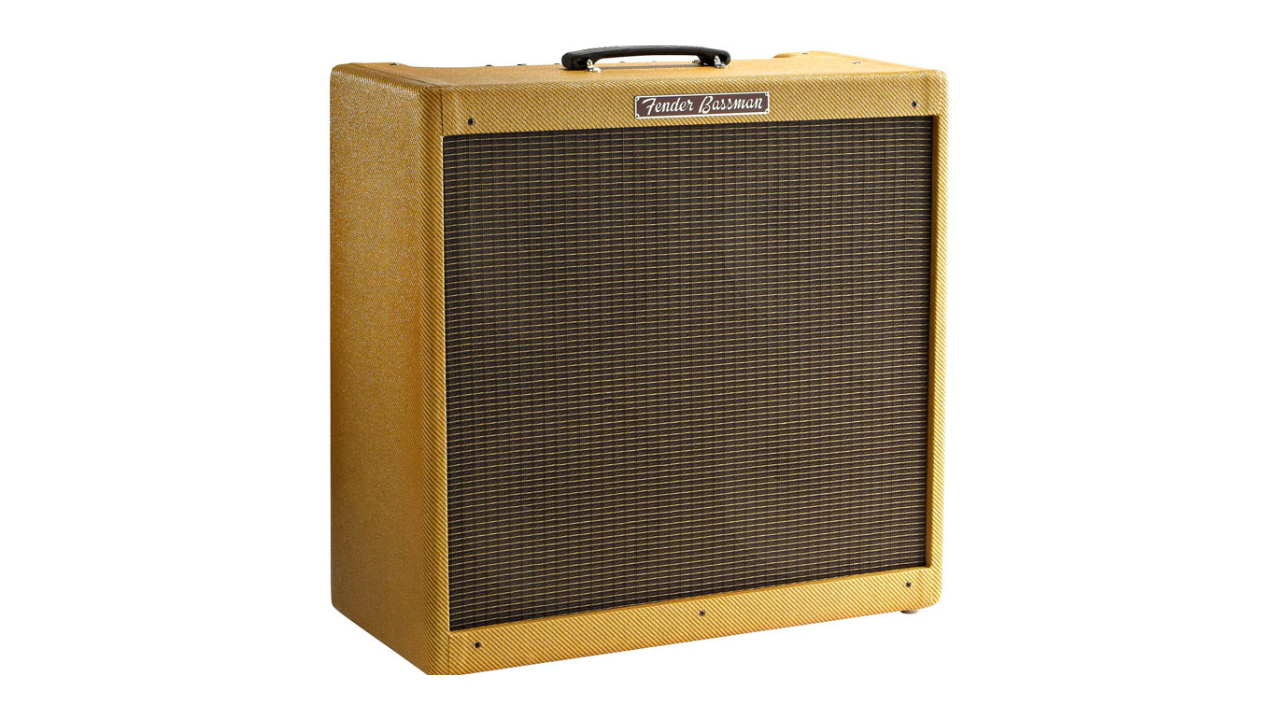
10. Fender ’59 Bassman LTD
Our expert review:
Specifications
Reasons to buy
Reasons to avoid
The big beast in the contemporary Fender line-up has a legendary reputation, and is one of the most influential amplifiers of all time.
Introduced in 1952 for bassists but soon adopted by guitarists, the Bassman has gone through a number of evolutionary steps. Based on the 1959 version, this reissue is a hefty 4 x 10” combo, finished in lacquered tweed, with two channels and two inputs per channel. For blues, jazz, pop and rock ’n’ roll players, it offers pure old-school tube mojo – touch-sensitivity, with an elastic bounce to the cleans and a forensic level of detail.
There’s no master volume on either channel, so you’ll have to crank it to get it into overdrive – but once you do, there’s a tubbiness and warmth that feels almost primeval. Don’t let the lack of reverb put you off. Get the best outboard reverb you can find, and you’ll have everything you need for early electric guitar tone. With plenty of headroom on offer, the Bassman will take pedals nicely, and throwing a boost or drive in front of it will help tease out that throaty tweed crunch.
FAQs
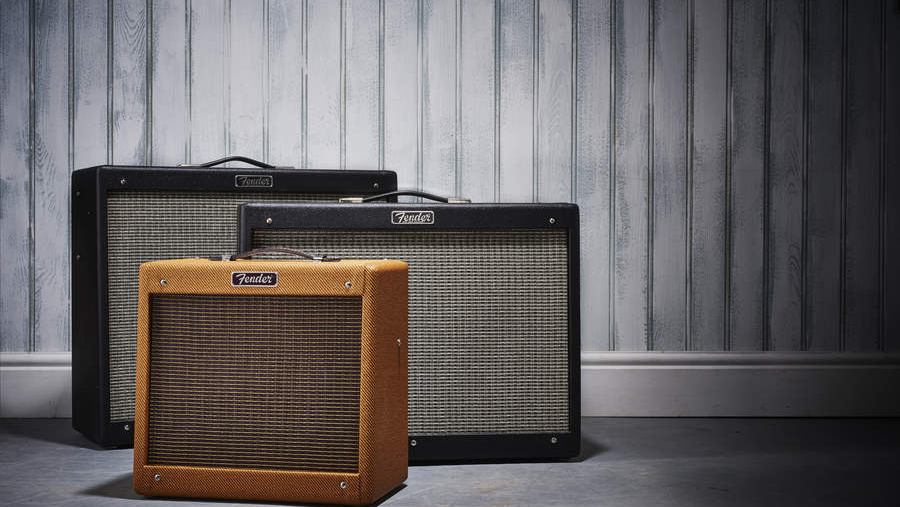
Which Fender amp is best for me?
Well, whether you’re looking for an all-tube design or a digital modeling amp, there’s a lot of choice. Size matters, of course, and with no master volume on hand, amps such as the Deluxe Reverb, with its 22W output, have too much volume for overdrive in domestic settings. But this power can make perfect sense when playing with a band.
Fender's Tone Master range solves a raft of Fender amp-related issues like weight and power with its all-digital, weight relieved approach to things. The digital circuit allows for modern touches such as an onboard attenuator, USB outputs and Cab Simulations which can make certain live and studio sessions much easier, but you still get plenty of that iconic Fender tone. Purists won't be happy – but are they ever happy?
Fender's dedicated modeling amps are also a brilliant tool, but more for practice than anything else. They can be used live with footswitches, but the patch-tweaking nature of amps such as the Mustang gives them the potential to be a bit fiddly and unreliable in a live setting. That being said, they're perfect for when you want to hear many different tones at the twist of a dial.
Find out more about how we make our recommendations and how we test each of the products in our buyer's guides.
When were Fender amps first made?
Fender is a company which is well known for its innovation, with many of their moments of genius influencing the course of guitar history forever. Although fixing home audio tech – in the days when it was fixable – and other amplification devices was Fender's original remit, it was inevitable that the Californian guitar giant would become a heavyweight in the amplifier game.
The company’s first commercially available amps arrived in 1946. The so-called Woodies – named for their hardwood construction – comprised the Princeton, the Deluxe (or Model 26) and the Professional. They were only in production for a couple of years before the design was revised, with pine being preferred to hardwood. The Dual Professional’s release ushered in the tweed era, and with its innovative dual-speaker design, the combo broke new ground.
The tweed era evolved quickly. Presumably inspired by the popularity of the home television set, TV-front amps went into production between 1948 and 1953. As the popularity of the amps skyrocketed, so new ideas were needed, with the company transitioning to the ‘wide panel’ format in 1952, and ‘narrow panels’ three years later. Amps such as the Twin and the Bassman soon started setting new standards for the company. You might recognize these, as many of the design elements remain in place today, and they’ve also provided reference tones for legions of boutique amp builders.
The restlessness of Fender's design soon birthed new classics. In 1963, the Twin Reverb was launched, winning accolades for its ample headroom and spanky tone. That same year saw the release of the Deluxe Reverb. A revised Deluxe with a spring reverb tank, this tube combo remains the amp of choice for many a Nashville session pro.
Do Fender make digital amps?
Launched in 2019, Fender’s all-digital Tone Master series has given tube purists food for thought, offering lighter, more practical alternatives to the company’s iconic originals. These original amps, while musically iconic and inimitable, are often a logistical nightmare, with amps such as the Super Reverb being a super-heavyweight, back-pain-inducing beast.
Fender amplifiers today are best described as caught in that push-pull between the classic sounds of vintage or vintage-inspired designs and the drive for innovation. Thankfully, Fender's amp expertise has shown that they're fully capable of achieving success in all of those areas. The digitalization of Fender’s practice and home amp offerings has not only proved successful in the Tone Master range, but also with the affordable LT and the fully featured GTX series.
Digital signal processing has enabled Fender’s amplifier line-up to take portability and practice to its logical conclusion with the Mustang Micro headphones amp. For 99 bucks, you can get a compact little unit with a dozen amp models, plenty of effects, and a take-anywhere build that’s ideal for late-night woodshedding.
How we test
We take a rigorous approach to our testing, ensuring that our recommendations are the absolute best they can be. Guitar World has been reviewing Fender amps for a very long time now, so we've got an excellent overview of the full range across the years, whether that's tube classics or their new Tone Master range of digital amps.
When testing an amplifier our first step is to inspect the features. We're looking to see how many tubes and what configuration it has. Or if it's a digital amp if there's any features like a USB-out or power attenuation. By doing this first it helps us ascertain who the amp is designed for, and thus inform our later tests.
Next we'll look at the build quality. An amplifier needs to be a durable piece of equipment, so we'll carefully examine the whole chassis to ensure it's well bolted together. We'll look all the amp internals too, particularly if it's a tube amp to see how everything is installed inside. We're looking for any potential weak points that may be present, as well as any signs of poor craftsmanship.
The usability of the amp is our next step of our testing. We're looking to see how easy it is to use, whether you need to download the manual to decipher how to use it, or if you can just get up and running straight away. Amps used to be quite simple devices but now with the advancements of modeling tech, you can get a huge amount of features, so it's important to judge how usable they are.
Finally, the most important, and most subjective component of our testing - the sound. We'll test each amp we get with a variety of different pickup types, at various EQ settings and at different volumes to get an overview of the sound. Ultimately guitarists will like different tones, so our aim is to get a measured view of what it sounds like without any bias.
We'll spend at least a couple of weeks with each amp we test to make sure we can give it a very detailed analysis. Living with the amp in question allows us to get over the honeymoon period and really dive into the nitty gritty of what it is, and how it performs.
Find out more about how we make our recommendations and how we test each of the products in our buyer's guides.
Related buying guides
You can trust Guitar World
- Enter the world of wonky six-strings with the best offset guitars
- More of the best guitar amps from Fender and beyond
- Choose from the best budget guitar amps under $500
Get The Pick Newsletter
All the latest guitar news, interviews, lessons, reviews, deals and more, direct to your inbox!
Jonathan Horsley has been writing about guitars since 2005, playing them since 1990, and regularly contributes to publications including Guitar World, MusicRadar and Total Guitar. He uses Jazz III nylon picks, 10s during the week, 9s at the weekend, and shamefully still struggles with rhythm figure one of Van Halen’s Panama.
- Matt McCrackenJunior Deals Writer
- Ross Holder











